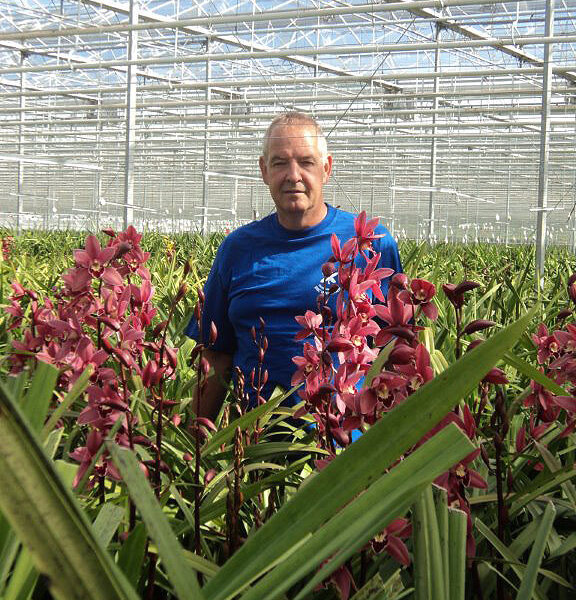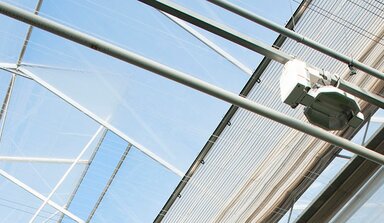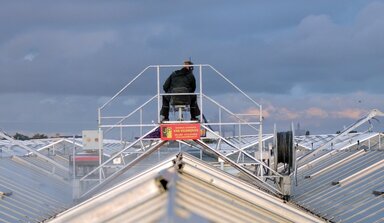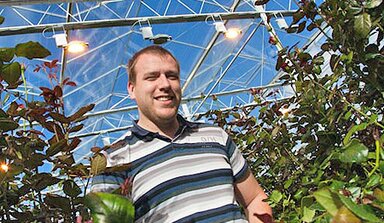Cymbidiums and ReduFuse IR
ReduFuse IR has allowed cymbidium grower Eric van Paasen to close the screen later in the day. He expects a positive effect on the number of stems and stem length.
Cymbidiums aren’t sun lovers. In the summer Eric van Paasen closes the screen at just 450 Watt/m². “This usually means closing them at 10 am and opening them again at 18.00,” he says. “But they can’t be closed completely due to the ventilation. When they are one quarter open the sunlight still comes in and in the other three quarters it is actually a little too dark.”

Van Paasen grows 1.5 ha of mini-cymbidiums in ’s Gravenzande, the Netherlands. The greenhouse roof is of a special type of glass (with low iron content) that allows extra light to penetrate, including some UV-B. In the autumn, winter and spring the extra light is appealing but in the summer it needs managing because it can become too warm in the greenhouse.
The grower is well equipped with screening capabilities. In one half of the greenhouse are two screens: LS10 and PH66 on one wiring system. One year ago an external screen was installed above the other half of the greenhouse. Inside is also a LS10 and a PH44 screen on one wiring system.
“With the external screen you can deflect the heat radiation from the glass, while you can still ventilate to the maximum. In this way we can achieve a greenhouse temperature that is 5 tot 6°C below the outside temperature, for example reduce it from 31°C to 25°C,” he says.
Allow in more light
The positive experiences with the outdoor screen gave him the idea to find a better solution for the other half. “I’d heard about ReduFuse IR from other colleagues. I immediately considered applying it. We have been using it for a month and it seems that we can more easily allow in more light without the crop turning yellow. You can see more growth and a few more shoots, but the good spring weather has also played a role. The biggest advantage is that we only close the screen after 12 noon.
We open it again at 17.00 so the plants get more light for a few extra hours. They don’t need any more; I think they can only withstand a certain amount of PAR-light.”
More photosynthesis
The extra light leads to more photosynthesis and therefore more reserves in the plant. As a result the grower expects a positive effect on production: more stems that are somewhat longer and heavier spikes. The possibilities to steer towards generative and vegetative growth have improved. “It all looks good,” he says. He will most likely leave the coating on until the end of September, depending on the weather forecast.
ReduFuse IR was not applied to the area with the external screen. Van Paasen is considering it though. “ It wouldn’t be bad here. Now we have to close the outer screen every time there’s a bit of sun. Allowing a little more light to enter would be better for production. But it is more difficult to make the calculations in this area.”


